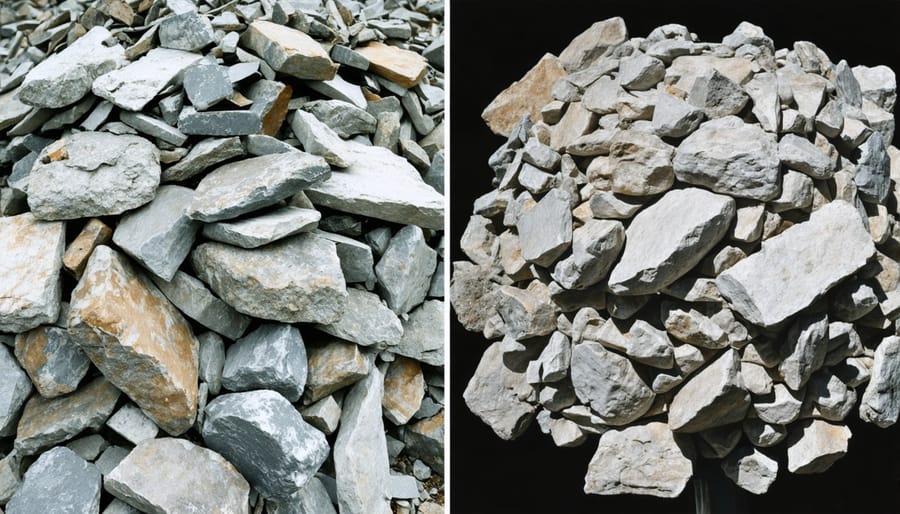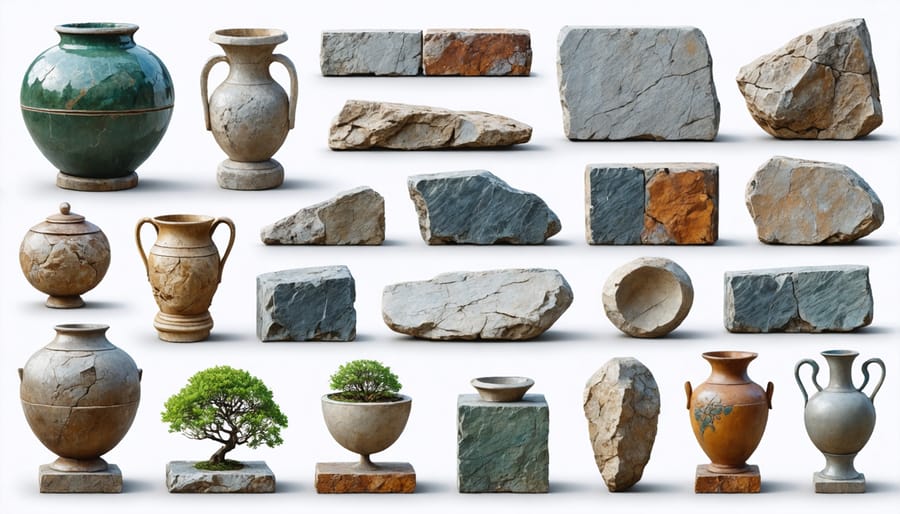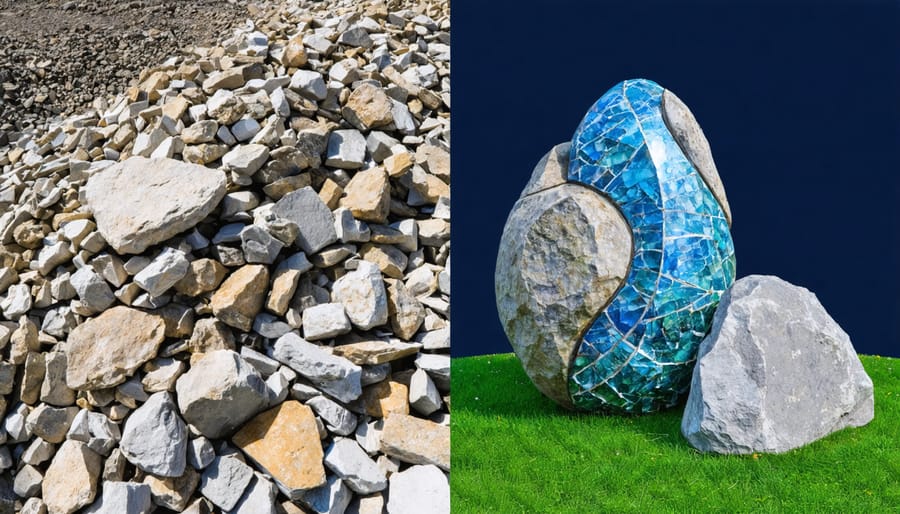Transform your creative practice into an eco-conscious art form through sustainable craft techniques that honor both tradition and our planet’s future. As global resources become increasingly precious, artists and craftspeople are pioneering innovative approaches to reduce waste, utilize natural materials, and create lasting pieces that tell a story of environmental stewardship.
From upcycled textile art to biodegradable pottery, sustainable crafting represents more than just a trend – it’s a fundamental shift in how we approach artistic creation. By choosing renewable materials, implementing zero-waste techniques, and embracing traditional methods that have sustained cultures for generations, modern makers are proving that environmental responsibility and artistic excellence can coexist beautifully.
This growing movement champions local sourcing, non-toxic materials, and cradle-to-cradle design principles, offering creative solutions to reduce our environmental impact while producing meaningful works of art. Whether you’re a seasoned artisan or an aspiring creator, incorporating sustainable practices into your craft not only minimizes your ecological footprint but also adds depth and purpose to your creative expression.
Join us as we explore practical techniques, innovative materials, and inspiring approaches that will help you develop a more sustainable craft practice – one that respects both your artistic vision and our planet’s delicate balance.
The Environmental Impact of Stone Waste
Current Statistics and Challenges
Recent industry data reveals that stone processing generates approximately 175 million tons of waste annually worldwide, with quarrying operations accounting for 40-60% of extracted material being discarded. This significant waste presents both environmental challenges and opportunities for sustainable innovation in the stone crafting sector.
Environmental impact studies show that traditional stone processing methods consume substantial amounts of water and energy, while producing considerable CO2 emissions. The average stone processing facility uses between 1,500-2,000 gallons of water daily, with only 50% being effectively recycled through current systems.
However, emerging technologies and sustainable practices are showing promising results. Modern recycling initiatives have demonstrated the potential to repurpose up to 85% of stone waste into valuable products, from construction aggregates to decorative elements. Innovative water recycling systems have reduced consumption by up to 90% in pilot facilities.
The challenge lies in widespread adoption of these sustainable practices. While initial implementation costs remain high, facilities that have invested in sustainable technologies report a 30-40% reduction in operational costs within the first three years.

The Case for Sustainable Stone Crafting
Sustainable stone crafting represents a crucial shift in how we approach this ancient art form, balancing traditional craftsmanship with environmental responsibility. By implementing sustainable practices, craftspeople can reduce waste, minimize environmental impact, and preserve natural resources for future generations. Modern stone workshops are increasingly adopting closed-loop water systems, which recycle and filter water used in cutting and polishing, significantly reducing water consumption and preventing contamination.
Efficient material use plays a vital role in sustainable stone crafting. Advanced cutting technologies and thoughtful design planning can maximize the use of each stone piece, reducing waste while maintaining quality. Remnants and offcuts can be repurposed for smaller projects or crushed for use in aggregate materials, ensuring nothing goes to waste.
Local sourcing of stone materials not only reduces transportation emissions but also supports regional economies and preserves traditional crafting techniques. Additionally, using natural finishing methods and eco-friendly sealants reduces chemical exposure while maintaining the stone’s natural beauty. These sustainable practices often result in cost savings over time, making them beneficial for both the environment and business operations.
Advanced Stone Recycling Methods
Stone Crushing and Sorting
The sustainable reuse of waste stone begins with efficient crushing and sorting processes, which have evolved significantly with modern stone processing techniques. This critical phase transforms discarded stone materials into valuable resources for various applications.
The process typically starts with primary crushing, where larger stone pieces are broken down into manageable sizes using jaw crushers. Secondary crushing further reduces these pieces to specific dimensions, while ensuring minimal dust generation through wet processing methods. This approach not only maximizes material recovery but also maintains environmental safety standards.
Automated sorting systems then separate the crushed stone into different size grades using vibrating screens and optical sorting technology. This precise segregation enables targeted use of materials: larger pieces for decorative applications, medium-sized aggregates for construction, and fine particles for composite materials.
Quality control measures ensure each grade meets specific requirements for strength, density, and composition. The sorted materials undergo washing to remove impurities, and water used in this process is recycled through closed-loop systems. This comprehensive approach minimizes waste while maximizing the value of recovered stone materials.
By implementing these systematic crushing and sorting procedures, manufacturers can achieve up to 95% material recovery rates, significantly reducing landfill waste while creating valuable resources for sustainable construction and craft applications.

Innovative Binding Technologies
Recent advancements in innovative stone fabrication methods have revolutionized how we approach stone waste utilization. Through groundbreaking binding technologies, manufacturers can now transform stone remnants and powder into durable, sustainable materials with diverse applications.
One notable development is the mineral-based polymer composite system, which combines stone waste with eco-friendly resins to create robust surfaces. This process utilizes up to 90% recycled stone content, significantly reducing landfill waste while maintaining the aesthetic appeal and durability of natural stone.
Bio-based binding agents derived from renewable resources are emerging as sustainable alternatives to traditional petroleum-based adhesives. These natural binders not only reduce environmental impact but also enhance the material’s end-of-life recyclability. When combined with stone waste, they create products suitable for architectural panels, countertops, and decorative elements.
Nano-crystallization technology represents another breakthrough, enabling the transformation of stone powder into solid materials without additional binding agents. This process uses pressure and controlled crystallization to create strong molecular bonds, resulting in products that maintain the original stone’s properties while giving new life to what would otherwise be waste material.
These binding innovations not only support sustainable manufacturing practices but also open new possibilities for creative expression in stone craftsmanship, allowing artisans to explore unique textures and forms while maintaining environmental responsibility.
Surface Treatment Techniques
Sustainable surface treatment techniques for recycled stone products focus on enhancing the material’s natural beauty while minimizing environmental impact. Popular eco-friendly finishing methods include natural waxing, which uses beeswax or plant-based alternatives to create a protective, water-resistant barrier while maintaining the stone’s breathability.
Mechanical treatments like honing and brushing can rejuvenate worn surfaces without harsh chemicals. These processes use varying grits of diamond pads with water as a cooling agent, creating different textures from smooth matte to textured finishes. The water used can be filtered and recycled, reducing waste.
For sealing and protection, water-based sealants have emerged as environmentally conscious alternatives to traditional solvent-based products. These penetrating sealers offer excellent protection while producing minimal VOC emissions and maintaining the stone’s natural appearance.
Traditional techniques like lime washing provide an authentic aged appearance and can be achieved using natural materials. This method is particularly effective for limestone and other calcium-based stones, creating a protective patina that improves with age.
For decorative finishes, natural pigments derived from mineral sources can be mixed with eco-friendly binders to create unique surface effects. These treatments not only preserve the stone’s character but also ensure the finished product remains environmentally responsible throughout its lifecycle.
Creative Applications in Stone Craft
Architectural Elements
Incorporating recycled stone into architectural elements represents a cornerstone of sustainable construction practices. Salvaged stone materials can be repurposed for various building features, from decorative wall cladding to functional garden pathways. Modern techniques, including 3D visualization for stone projects, help architects and designers optimize the use of reclaimed materials while maintaining aesthetic appeal.
Reclaimed stone offers unique character through its weathered appearance and historical significance. Common applications include creating accent walls, fireplace surrounds, and outdoor features like retaining walls or water features. The aging process often enhances the stone’s natural beauty, making it particularly valuable for projects seeking authentic, timeworn aesthetics.
When sourcing recycled stone, professionals typically work with architectural salvage yards, demolition sites, and specialized suppliers. The key to successful implementation lies in careful material selection and proper assessment of structural integrity. Each piece must be evaluated for stability, weathering resistance, and compatibility with modern building standards.
Processing recycled stone may require additional cleaning, cutting, or reshaping to meet specific project requirements. However, these extra steps are often offset by the environmental benefits and unique character they bring to the finished project. Skilled craftsmen can blend traditional stone-working techniques with contemporary design approaches to create stunning architectural features that honor both sustainability and aesthetics.
By incorporating recycled stone elements, projects can achieve LEED certification points while preserving valuable natural resources and reducing construction waste. This approach not only supports environmental conservation but also adds distinctive character to modern architectural designs.
Decorative Art Pieces
Recycled stone offers endless possibilities for creating stunning decorative art pieces while promoting sustainability. By repurposing stone remnants and offcuts from construction projects or naturally weathered pieces, artists and craftspeople can transform what might otherwise be waste into beautiful functional and aesthetic elements.
Popular decorative applications include mosaic wall art, where small stone pieces are arranged in intricate patterns to create murals or abstract designs. These can be enhanced by incorporating other recycled materials like glass or ceramic tiles. Garden sculptures made from recycled stone blocks or fragments add character to outdoor spaces while giving new life to discarded materials.
Tabletop decorations and centerpieces can be crafted from polished stone remnants, creating unique conversation pieces that showcase the natural beauty of different stone varieties. Small offcuts can be transformed into bookends, paperweights, or decorative bowls through careful shaping and finishing.
For more ambitious projects, larger stone pieces can be carved into fountains, benches, or free-standing sculptures. These statement pieces often combine different stone types and textures, highlighting the material’s natural characteristics while demonstrating creative reuse principles.
When working with recycled stone, artists often preserve natural weathering patterns and imperfections, incorporating them into the final design. This approach not only reduces waste but also creates one-of-a-kind pieces that tell a story of environmental consciousness through their very existence.
The key to successful decorative stone art lies in careful material selection and thoughtful design that works with, rather than against, the existing properties of the recycled stone pieces.

Implementation and Best Practices
Workshop Setup
Setting up a sustainable crafting workspace requires thoughtful organization and eco-conscious equipment choices. Begin with a well-ventilated area equipped with adequate natural lighting to reduce energy consumption. Install LED task lighting for detailed work during darker hours. Your main workbench should be sturdy and ideally made from reclaimed wood or sustainable materials.
Essential tools include precision measuring instruments, recycled containers for material storage, and water-efficient cleaning systems. While automated stone crafting systems are becoming popular, focus on multi-purpose hand tools that consume less energy and offer greater control.
Organize your space with clearly labeled recycling stations for different materials. Install dust collection systems to maintain air quality and enable material recovery. Consider a dedicated area for material storage, keeping larger pieces elevated on sustainable wooden pallets to prevent moisture damage. Include a cleaning station with eco-friendly solvents and biodegradable cleaning solutions.
Maintain a digital inventory system to track materials and reduce waste. This helps in planning projects efficiently and identifying opportunities for repurposing leftover materials.
Safety and Environmental Considerations
When engaging in sustainable craft projects, safety should always be your primary concern. Always work in a well-ventilated area, especially when using adhesives or finishes, and wear appropriate protective equipment such as safety glasses, dust masks, and gloves when handling materials or tools. Keep a first aid kit nearby and ensure proper disposal of any hazardous materials.
Consider the environmental impact of your craft supplies and choose eco-friendly alternatives whenever possible. Opt for water-based adhesives instead of solvent-based ones, and select natural dyes and finishes over synthetic options. When sourcing materials, prioritize recycled, reclaimed, or sustainably harvested resources to minimize environmental impact.
Proper waste management is crucial. Set up separate bins for recyclable materials, compostable items, and general waste. Many craft materials can be reused or repurposed – save scraps and offcuts for future projects. When disposing of materials, research local recycling facilities that accept specific craft supplies, and avoid sending recyclable materials to landfills.
Store materials safely and properly labeled, away from children and pets, and maintain good workspace organization to prevent accidents and waste.
Sustainable stone crafts represent more than just an artistic endeavor – they embody our commitment to environmental stewardship and cultural preservation. As the demand for eco-friendly building materials continues to grow, sustainable stone working practices are becoming increasingly vital to the industry’s future. By embracing waste reduction techniques, utilizing local materials, and preserving traditional craftsmanship, we can ensure that stone crafts remain both environmentally responsible and economically viable. Looking ahead, technological innovations in stone recycling and processing will further enhance sustainability efforts, while growing consumer awareness drives demand for responsibly sourced stone products. The future of stone crafts lies in balancing time-honored traditions with modern environmental consciousness, creating beautiful, lasting works that honor both our heritage and our planet.










